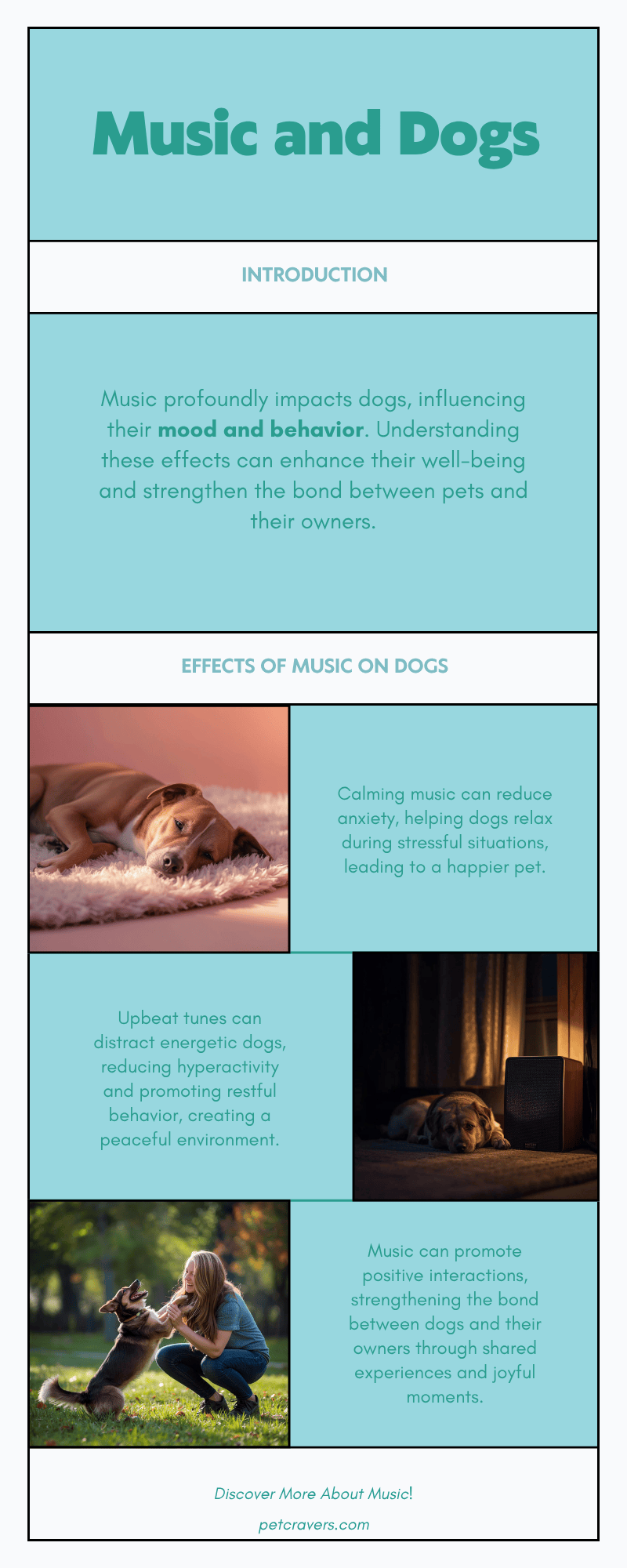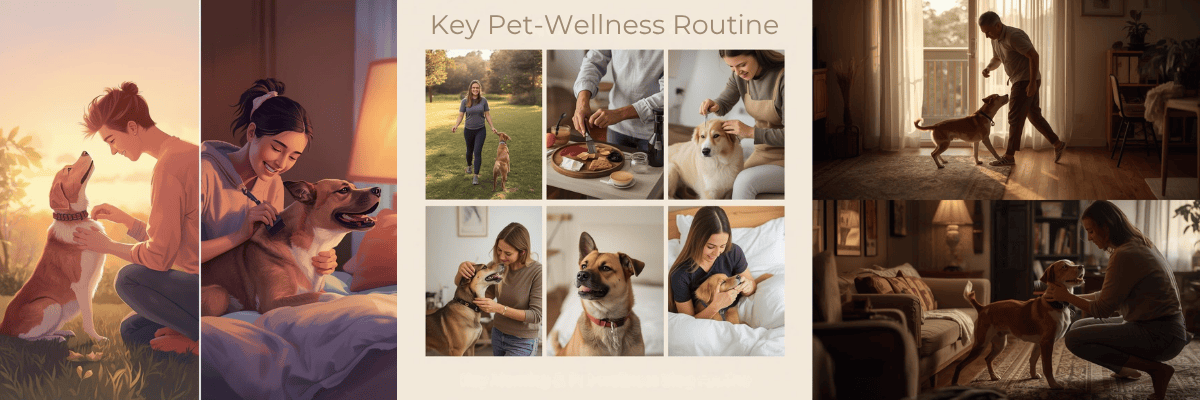Introduction
In recent years, pet owners have become increasingly aware of the emotional and psychological needs of their furry companions. Just like humans, dogs experience stress, anxiety, and excitement—and many owners are searching for ways to soothe and engage their pets in healthy, enjoyable ways. One intriguing approach that has gained popularity is using music for dogs.
But can music really influence a dog’s mood, behavior, and even its relationship with its owner? Researchers and dog trainers have started exploring how certain types of music—particularly calming melodies—can reduce stress, promote relaxation, and create an environment where dogs feel safe and comfortable. While we often think of music as a human pastime, evidence suggests it can have a measurable impact on dogs’ emotional states.
This raises an exciting question: Can music help strengthen the bond between dogs and their owners? By understanding how dogs respond to different sounds and rhythms, owners may be able to use music not just for relaxation, but as a tool to foster trust, companionship, and positive interactions. In this post, we’ll explore the science behind music for dogs, how it affects their behavior, and practical ways to incorporate music into your time together—ultimately helping you connect with your canine friend on a deeper level.
The Science Behind Music and Dogs
To understand how music might strengthen the bond between you and your dog, it helps to know how dogs perceive and react to sound. Dogs’ hearing is far more sensitive than humans’. While humans generally hear sounds between 20 Hz and 20,000 Hz, dogs can detect frequencies from 40 Hz up to 60,000 Hz. This means they perceive higher-pitched sounds that we might not even notice, making their reaction to music quite different from ours.

Researchers have found that different types of music can produce distinct emotional and behavioral responses in dogs. For instance, studies in animal shelters have shown that classical music can calm anxious dogs, reduce barking, and encourage restful behavior. On the other hand, loud or heavy metal music may increase agitation and stress. This suggests that dogs, like humans, are influenced by the rhythm, tempo, and tone of the sounds they hear.
Music therapy isn’t just for shelter dogs—it’s also being explored in veterinary clinics, dog training centers, and homes. Some studies report that dogs exposed to soothing music during stressful experiences, such as veterinary visits or thunderstorms, show lower heart rates and reduced signs of anxiety. These findings indicate that music can play a significant role in creating a positive emotional environment for dogs, which is a key foundation for building trust and a stronger bond with their human companions.
By understanding these responses, owners can make informed choices about what music to play, how loud it should be, and when it might be most effective, ultimately using music as a tool not just for relaxation but for enhancing connection and shared experiences.
How Music Can Affect Dog Behavior
Music doesn’t just fill the background—it can actively influence your dog’s behavior, mood, and overall well-being. Understanding these effects can help you use music as a tool to create a calmer, happier environment for your canine companion.

1. Calming Anxiety and Stress
Many dogs experience anxiety in certain situations, such as during thunderstorms, fireworks, or when left alone. Studies have shown that soothing music, especially classical compositions, can reduce signs of stress. Dogs may exhibit slower breathing, relaxed postures, and less pacing when exposed to calming melodies. By reducing stress, music creates a more comfortable space for your dog to feel safe and connected to you.
2. Reducing Hyperactivity and Destructive Behavior
Some dogs become overly energetic or even destructive when bored or anxious. Gentle music can help lower arousal levels, encouraging your dog to settle down instead of chewing furniture or barking excessively. This is particularly useful in homes where multiple pets live together or during times when your dog needs to relax indoors.
3. Encouraging Positive Interactions
Music can also enhance moments of play and bonding. A calm, enjoyable background melody can make training sessions or cuddle time more pleasant, allowing dogs to focus and respond better. Over time, associating music with positive experiences may strengthen your dog’s trust in you and increase their willingness to engage in cooperative activities.
4. Supporting Routine and Predictability
Playing music at certain times of the day—like during walks, mealtime, or bedtime—can provide predictable cues that signal comfort and relaxation. Dogs thrive on routine, and music can become a subtle yet effective way to create a structured, harmonious environment that supports emotional stability and bonding.
Music and Human-Dog Bonding
Bonding with your dog goes beyond walks and playtime—it’s about creating shared experiences that build trust, comfort, and emotional connection. Music can play a surprisingly effective role in this process.

1. Shared Calm and Relaxation
When you play calming music while spending quiet time together, such as cuddling on the couch or resting after a walk, it sets a soothing atmosphere for both you and your dog. This shared state of relaxation encourages your dog to associate your presence with safety and comfort, which strengthens the emotional bond.
2. Enhancing Training and Interaction
Music can also improve the quality of your interactions during training sessions or structured play. A relaxed dog is more attentive and responsive, making training more effective and enjoyable. Over time, these positive experiences foster trust and cooperation, key components of a strong human-dog relationship.
3. Emotional Synchrony
Dogs are highly sensitive to human emotions. Playing music that helps you remain calm and relaxed can have a subtle effect on your dog’s emotional state. This phenomenon, called emotional contagion, means that your calmness can help your dog stay calm, reinforcing a sense of connection and understanding.
4. Creating Positive Associations
By consistently pairing music with enjoyable activities—such as mealtime, playtime, or petting sessions—your dog learns to associate music with positive experiences. This not only makes music a source of comfort but also strengthens the psychological link between you and your dog, deepening your bond over time.
Choosing the Right Music for Your Dog
Not all music affects dogs in the same way, so it’s important to choose carefully to ensure a positive impact on their mood and behavior.
1. Types of Music Generally Preferred by Dogs
Research and anecdotal evidence suggest that dogs tend to respond best to calm, slow-tempo music, particularly classical compositions with soft melodies. Genres like soft rock, reggae, or ambient music can also have relaxing effects, while loud, fast-paced, or heavily percussive music—such as heavy metal or hard rock—may increase anxiety or restlessness.
2. Volume and Duration Considerations
Dogs have more sensitive hearing than humans, so keeping the volume moderate or low is crucial. A soft background volume is enough to provide calming effects without overstimulation. Music sessions of 20–40 minutes can be effective, but owners should observe their dog’s reactions and adjust the duration accordingly.
3. Observing Your Dog’s Response
Each dog is unique, so it’s important to watch for signs of enjoyment or stress. Relaxed body language, lying down, or gentle tail wagging usually indicate a positive response, while pacing, whining, or avoidance may suggest discomfort. Experimenting with different genres and tempos helps identify what works best for your individual dog.
4. Avoiding Overstimulation
Even calming music can become overwhelming if played constantly or too loudly. Reserve music for specific bonding moments or stress-relief situations, rather than keeping it on all day. This ensures that music remains a pleasant and meaningful stimulus rather than a background noise your dog starts to ignore or dislike.
Tips for Using Music to Strengthen Bonding
Integrating music into your dog’s daily routine can be simple and highly effective for enhancing your bond. Here are practical tips to make the most of it:
1. Play Music During Quiet Time
Choose calm, soothing music while cuddling, resting, or spending downtime together. This creates a relaxing environment where your dog feels safe and connected to you.
2. Combine Music with Training or Play
During training sessions or interactive play, gentle background music can help your dog focus and remain calm, making learning new commands or practicing tricks more enjoyable. Over time, this positive association can strengthen trust and cooperation.
3. Use Music for Stressful Situations
If your dog is anxious during thunderstorms, fireworks, or veterinary visits, playing calming music in advance or during the event can reduce stress. This reassures your dog and reinforces the idea that your presence is comforting.
4. Observe and Adapt
Pay attention to how your dog reacts to different genres, tempos, and volumes. Every dog is unique, so experiment with various options to see what makes your dog most relaxed and happy.
5. Make Music a Ritual
Playing music at consistent times—like before bedtime, during morning cuddles, or after walks—helps your dog anticipate positive experiences. These rituals provide structure and comfort, further deepening your emotional bond.
6. Pair Music with Positive Reinforcement
For maximum impact, combine music with treats, petting, or verbal praise. This strengthens the association between music and positive experiences, enhancing both relaxation and bonding.
Limitations and Considerations
While music can be a wonderful tool for bonding with your dog, it’s important to approach it with realistic expectations and awareness of your dog’s individual needs.
1. Not All Dogs Respond the Same Way
Every dog has a unique personality and sensitivity to sound. Some may find music calming, while others may be indifferent or even slightly stressed. Observe your dog carefully to ensure the music is having a positive effect.
2. Music Should Complement, Not Replace, Interaction
Music can enhance bonding, but it cannot replace physical attention, play, or quality time with your dog. Human interaction remains the most critical factor in building trust and connection.
3. Avoid Overstimulation
Playing music too loudly or for extended periods may overwhelm your dog, leading to anxiety or avoidance. Stick to moderate volumes and limited sessions to maintain music as a positive experience.
4. Watch for Signs of Discomfort
If your dog shows behaviors like whining, pacing, hiding, or pinned-back ears, it may indicate stress or discomfort with the music. In these cases, stop the music and try a different approach, such as a softer genre or shorter duration.
5. Individual Preferences Matter
Just as humans have different musical tastes, dogs also have preferences. Some may prefer classical, others ambient sounds, and some may enjoy gentle pop or reggae. Experiment to find what your dog enjoys most while prioritizing calm and soothing compositions.
By keeping these considerations in mind, you can ensure that music remains a positive tool for relaxation, enrichment, and bonding rather than a source of stress.
Conclusion
Music isn’t just entertainment—it can be a powerful tool for enhancing the emotional connection between you and your dog. From calming anxiety to encouraging positive interactions, the right music can help create a peaceful, enjoyable environment where your dog feels safe, relaxed, and connected to you.
While not every dog responds the same way, observing your dog’s reactions and experimenting with different genres, tempos, and volumes can help you discover what works best. Remember, music should complement—not replace—quality time, play, and physical affection. When combined with consistent attention and positive reinforcement, music can become a meaningful part of your bonding routine.
In the end, sharing music with your dog is about more than sound—it’s about creating moments of trust, comfort, and shared joy. By exploring this simple yet effective approach, you can strengthen your bond and enrich your dog’s emotional well-being, turning everyday moments into opportunities for deeper connection.




Leave a Reply